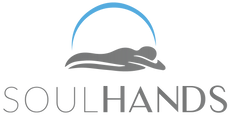Frequently Asked Questions
What is massage therapy?
Massage therapy is the manipulation of the soft tissues of the body including muscles, connective tissue, tendons, ligaments and joints. Massage therapy helps alleviate the soft tissue discomfort associated with every day and occupational stresses, muscular over-use and many chronic pain conditions. If employed early enough after accidents involving trauma and injury, massage therapy can greatly reduce the development of painful muscular patterning.
Could I experience any pain during or after the massage?
Our practitioners regularly check in with you to see if their pressure is ok and you should always let them know if it is ever too much. Following a massage, it is possible to have some soreness for 24-48 hours, similar to the sensation experienced after a good workout.
Is massage therapy a regulated health profession?
The practice of massage therapy is regulated under the Regulated Health Professions Act, 1991 (RHPA) and is therefore, a Regulated Health Profession. Only individuals who have completed the requisite training and have met the strict competency requirements of the College of Massage Therapists of Ontario (CMTO) can call themselves a "Massage Therapist" or a "Registered Massage Therapist". When seeking Massage Therapy, look for an individual who uses one of those two titles and ask to see their registration with the CMTO.
Is massage therapy covered under the Ontario Health Insurance Plan (OHIP)?
No. Massage therapy treatments are not covered under OHIP, regardless of whether treatment has been requested by a physician. Most progressive extended health insurance plans cover massage therapy when provided by a registered massage therapist. Please consult your extended health benefit plan.
Why do massage therapists charge HST?
Under the Federal Excise Tax Act, massage therapy is a service to which GST was applied. While massage therapists are considered health care practitioners under Ontario Regulated Health Professions Act, 1991, massage therapy is not included in the definition of health services that are exempt from the application of the HST. The list of exemptions is controlled by the federal government and the federal minister of finance has made clear that the current policies governing exemptions will remain in place. A health profession can be exempted if it is regulated in five provinces or territories or if it is paid for in the health plans of three provinces. Massage therapy does not meet either of these conditions.
How early can I arrive for my treatment? .
Please arrive no sooner than 15 mins before your treatment. We have a small reception area but our front door may be locked during treatments.
Will I be reminded about my appointment?
In addition to your confirmation email, you will receive a reminder email/text 2 days prior to your appointment.
What will happen on the first visit?
On the first visit, you will complete a confidential health history as part of your assessment. This is important information for the Massage Therapist because they need to know if you have any medical conditions or taking any medications. The massage therapist will listen to your concerns, assess your individual needs, as well as other factors that may be contributing to your injury (Lifestyle, nutritional status, etc.) The massage therapist will then develop a treatment plan with you to ensure you receive an appropriate treatment to help you return, as much as possible, to your normal activity.
Do I have to remove all of my clothes?
No. Your comfort level as a client is the most important to all Registered Massage Therapists. Massage therapists can provide important treatment whether you elect to remove any, some, or all of your clothing. All RMT's are trained in proper draping procedures to ensure your privacy is completely respected at all times during treatment. Your comfort level and ability to relax is paramount to effective treatment.
Registered massage therapists will also describe the techniques to be provided to ensure that you are comfortable with them. Your consent is sought before treatment begins. If you are uncomfortable, let your RMT know immediately, whether that discomfort involves the treatment, draping or any pain you may experience.
What if I am late for my scheduled time?
If you arrive late for your massage; the session may be shortened in order to accommodate others whose appointment follows yours. Depending upon how late you arrive for the appointment, your therapist will then determine if there is enough time remaining to start a treatment.
Can I book a treatment at the same time as my friend/family member?
At this time, we are unable to accommodate multiple bookings. Please email info@soulhands.ca so we could further assist you.
What should you wear for a massage?
Our massage specialists can make adjustments to their techniques to massage you in any attire. Your therapist will always advise you to undress to your comfort level. It all depends on you and what you’re comfortable with. We will work around or modify your treatment if you decide to keep any clothing on in the areas that will be worked on.
Should I eat before I come for a massage?
It is best to not eat a heavy meal or drink a large amount of liquids for at least 90 minutes before your massage. Deep tissue massage requires intense pressure, which can be uncomfortable if your stomach is full or trying to digest a large meal.
Will I feel sleepy or dizzy after the massage?
You may relax to a point where you experience a power nap during the massage. It is beneficial because it gives your system the opportunity to recharge. Benefits include: boosting your memory, cognitive skills, creativity, and energy level. Stand up slowly after the massage in case of dizziness and it’s recommended to drink water after massage to re-hydrate and help eliminate toxins. Any sleepiness will subside quickly and be replaced by increased energy and alertness.
If you have any further questions, please feel free to email the clinic at info@soulhands.ca
